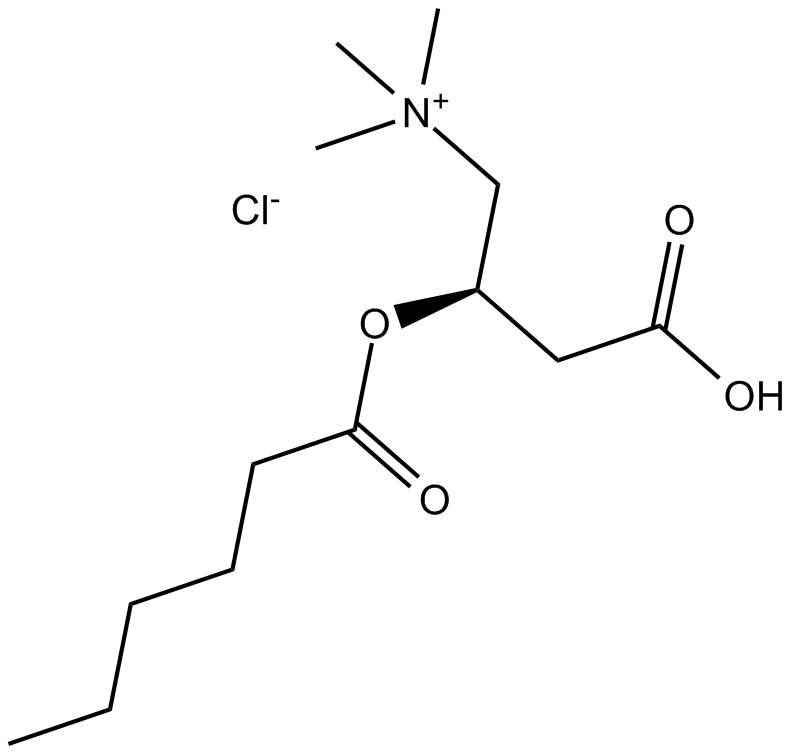(±)-Hexanoylcarnitine chloride |
| Catalog No.GC17351 |
important intermediates in lipid metabolism
Products are for research use only. Not for human use. We do not sell to patients.

Cas No.: 6920-35-0
Sample solution is provided at 25 µL, 10mM.
(±)-Hexanoylcarnitine chloride is an agonist for cholinergic and a homolog of acetylcarnitine chloride. Acetylcholine receptor (AChR) is an integral membrane protein receptor for acetylcholine. There are two kinds of AChRs: nicotinic acetylcholine receptors and muscarinic acetylcholine receptors.
(±)-Hexanoylcarnitine chloride is a cholinergic agonist and an intermediate in lipid metabolism [1]. In retinal ganglion cells, acetylcarnitine and acetylcholine inhibited GABAergic responses to exogenous GABA and GABAergic inhibitory postsynaptic currents [2].
In dogs with coronary ligation, (-)-carnitine chloride (LCC) (300 mg/kg) and acetyl (-)-carnitine chloride (ALCC) (300 mg/kg) inhibited the ventricular arrhythmia. Also, LCC and ALCC improved oxidative phosphorylation rate and the mitochondrial function [1]. In the mouse hot plate test, acetyl-l-carnitine (ALCAR) (100 mg/kg) exhibited analgesia. While, U-73122 and neomycin (the phospholipase C (PLC) inhibitors) blocked the increase of the pain threshold induced by ALCAR. LiCl that impairing phosphatidylinositol synthesis antagonized the antinociception in a dose-dependent way. PMA and PDBu (PKC activators) blocked the increase of the pain threshold in a dose-dependent way. These results suggested that ALCAR analgesia required the participation of the PLC-IP3 pathway [3].
References:
[1]. Imai S, Matsui K, Nakazawa M, et al. Anti-arrhythmic effects of (-)-carnitine chloride and its acetyl analogue on canine late ventricular arrhythmia induced by ligation of the coronary artery as related to improvement of mitochondrial function. Br J Pharmacol, 1984, 82(2): 533-542.
[2]. B?hring R, Standhardt H, Martelli EA, et al. GABA-activated chloride currents of postnatal mouse retinal ganglion cells are blocked by acetylcholine and acetylcarnitine: how specific are ion channels in immature neurons? Eur J Neurosci, 1994, 6(7): 1089-1099.
[3]. Galeotti N, Bartolini A, Calvani M, et al. Acetyl-L-carnitine requires phospholipase C-IP3 pathway activation to induce antinociception. Neuropharmacology, 2004, 47(2): 286-294.
Average Rating: 5 (Based on Reviews and 9 reference(s) in Google Scholar.)
GLPBIO products are for RESEARCH USE ONLY. Please make sure your review or question is research based.
Required fields are marked with *




















